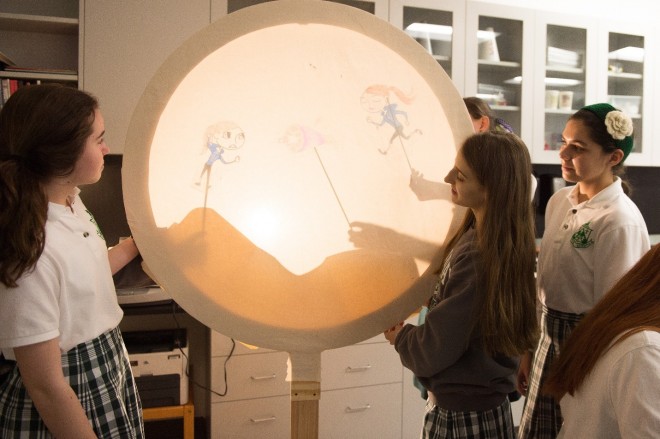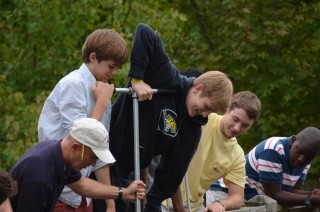Theatre Technical Teacher Robert Kallos worked with the 8th grade science team members, who were seeking a way to help the students internalize the concepts learned in Science, particularly how organelles, a specialized cellular part that has a specific function. After a discussion, a shadow theatre process was chosen as a vehicle for the students to be able to demonstrate a deeper understanding of the science concept. Rather than miniaturizing a process that was already small in scale, the shadow theater project was designed to “enlarge” the process, not unlike the movie Fantastic Voyage, where a team of scientists was reduced in size to enter the human body, making the bodily cells and tissues larger than life. The thinking was that to allow the students to become shadows, as actors in the process, would spur more active learning by the students. To support this approach to learning large circular and mobile screens were created to allow the students to be fully immersed in shadows and light. The students were asked to study the function and role of the organelle and then transpose that function into a story that could be performed.
Shadow puppet theatre is a global phenomenon which, like three-dimensional puppetry, has existed for thousands of years. It is a unique approach to theatrical visualization that uses illuminated silhouette forms to convey a narrative. Nuances of movement, emotion, or location must be expressed within the limitations of silhouette forms and the illuminated stage space, typically a small screen or surface that does not allow for extensive depth of field or elaborate stage design Simplicity remains an essential, central feature of shadow puppetry.



